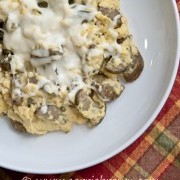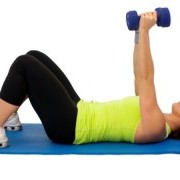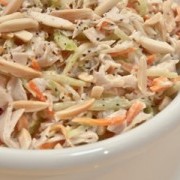How to Eat More, Burn Fat, and Boost Health (Part 1 of 2)
“Treating obesity will come not from repetition of anachronistic preconceptions [outdated theories] but rather from the rigorous scientific approach.” – J.M. Friedman, Rockefeller University
You and I already know that we can eat more—smarter—by consuming more, higher-quality calories. But we first need to know what the highest-quality calories are, where we can get them, and why eating more of them helps us to burn body fat. Fortunately, we already know the answers to all of these questions.
We know that four factors determine calorie quality:
- Satiety – How well calories prevent overeating
- Aggression – How likely calories are to be stored as body fat
- Nutrition – How many nutrients are provided per calorie
- Efficiency – How many calories can be converted into body fat
We know SANE calories come from the water-, fiber-, and protein-packed foods found in nature. That makes sense. Why would anything or anyone “design” us to run on a low-fat-low-protein-high-starch diet which was not possible for 99.8% of our evolutionary history?
“An increase in dietary protein content comparable with that observed in popular low-carbohydrate diets, but [accompanied by] no reduction in dietary carbohydrate content, resulted in rapid losses of weight and body fat.”- D.S. Weigle, University of Washington
Finally, you and I know we want to eat more SANE natural food because that’s the easiest way to avoid inSANE unnatural starches and sweets. Now for the day-to-day details.

First and foremost: Do not diet.
Dieting is restricting yourself abnormally for a short period of time. As D.S. Weigle at the University of Washington tells us, “energy-restricted diets are a physiologically unsound means to achieve weight reduction.” You’re better off switching over to eating more of the right foods. As E.C. Westman of Duke University reminds us, “The persistence of an epidemic of obesity and type 2 diabetes suggests that new nutritional strategies are needed if the epidemic is to be overcome.” Your “new nutritional strategy” is neither abnormal nor short-term. You’ll simply eat the way our ancestors ate for 99.8% of our history. You’ll get back to normal eating so that your biological processes can get back to functioning normally.
“If you are sedentary and overweight, and want to get rid of body fat permanently, about the worst thing you can do is to keep on dieting.” – Geoffrey Cannon, author Dieting Makes You Fat
Still, when people see you dropping pounds of body fat while eating more, they will ask what diet you are on. Let’s cover how to answer in the next post.
- Cannon, Geoffrey, and Hetty Einzig. Dieting makes you fat. New York: Simon and Schuster, 1985. Print.
- Friedman JM. Modern science versus the stigma of obesity. Nat Med. 2004 Jun;10(6):563-9. Review. PubMed PMID: 15170194.
- Miller WC. Diet composition, energy intake, and nutritional status in relation to obesity in men and women. Med Sci Sports Exerc. 1991 Mar;23(3):280-4. Review. PubMed PMID: 2020264.
- Rose, Geoffrey, and K. T. Khaw. Rose’s Strategy of Preventive Medicine the Complete Original Text. Oxford [etc.]: Oxford UP, 2008. Print.
- Weigle DS. Human obesity. Exploding the myths. West J Med. 1990 Oct;153(4):421-8. Review. PubMed PMID: 2244378; PubMed Central PMCID: PMC1002573.
- Weigle DS, Breen PA, Matthys CC, Callahan HS, Meeuws KE, Burden VR, Purnell JQ. A high-protein diet induces sustained reductions in appetite, ad libitum caloric intake, and body weight despite compensatory changes in diurnal plasma leptin and ghrelin concentrations. Am J Clin Nutr. 2005 Jul;82(1):41-8. PubMed PMID: 16002798.
- Westman EC, Feinman RD, Mavropoulos JC, Vernon MC, Volek JS, Wortman JA, Yancy WS, Phinney SD. Low-carbohydrate nutrition and metabolism. Am J Clin Nutr. 2007 Aug;86(2):276-84. Review. PubMed PMID: 17684196


































